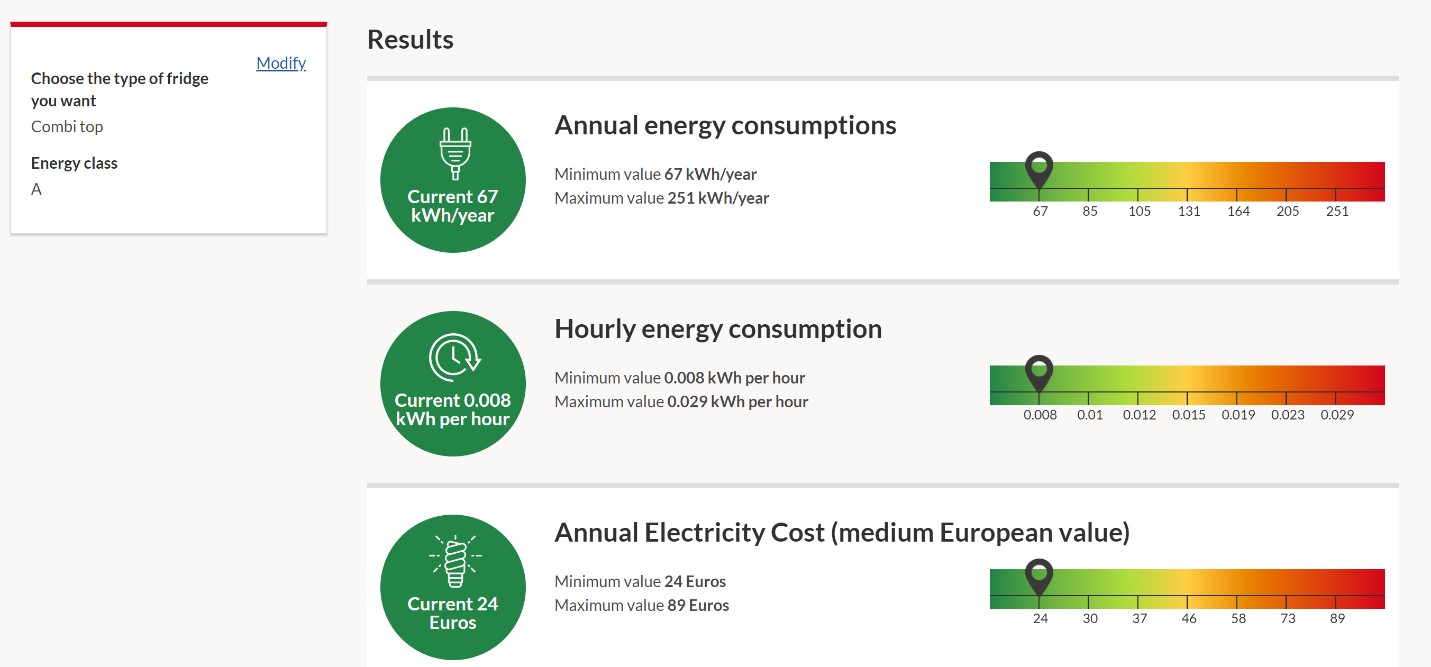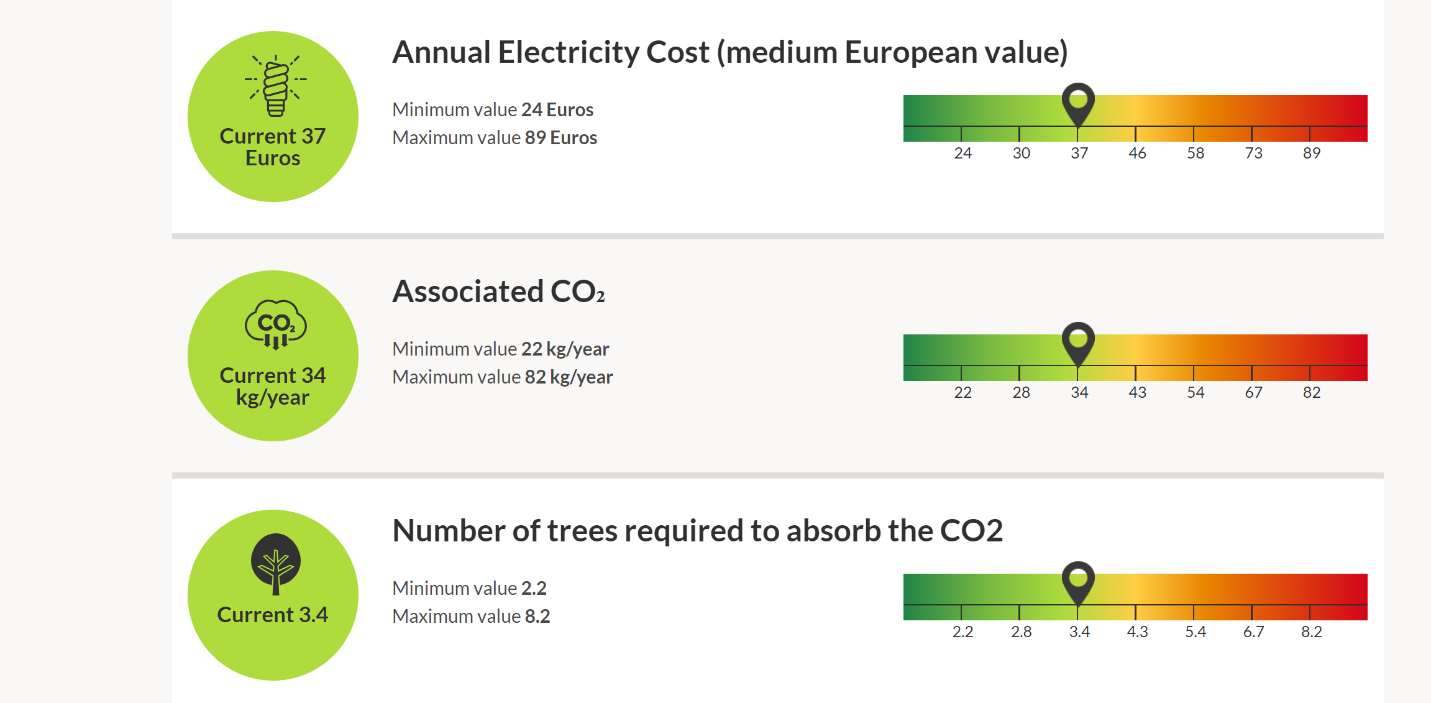To help citizens make fully informed choice when buying home appliances, the BELT project developed a calculator that provides information, in accordance with the characteristics of the appliance and its using, on its annual energy consumption, hourly energy consumption, annual electricity cost, associated CO2 emission, and number of trees required to absorb the CO2.
It enables a consumer to check how much the specific product spends electricity, money and how it affects nature, taking into consideration its consumption, based on the number of household members, type of the appliance and its energy class. The calculator provides information on the appliances whose energy labels have recently changed: refrigerators, light bulbs, dishwashers, washing machines and dryers and monitors.
For instance, as shown on the link https://www.belt-project.eu/belt/fridges/calculator/results a combi top refrigerator of energy class “A” used by a single person will spend 67 kWh of electricity per year, will cost 24 euros (medium European value) annually, will produce 22 kg of CO2 per year, amount whose absorption requires 2.2 trees.

For comparison, the same fridge of energy class “C” spends 105 kWh/year, 37 euros per year, and produces 34 kg of CO2 per year, requiring 3.4. trees for absorption.

As explained by the BELT project, since 1995, the EU energy label has proven to be a success: 85% of EU consumers recognise and use it when purchasing. It has also driven innovative industry developments and competition, with new products placed on the market progressively moving up in energy classes. Although initially most of the models were in the lowest classes (i.e. “E”, “F”, “G”), new models deserved higher until most of the appliances were in the top classes (“A+++”, “A++”, “A+”) and no product was in the lowest classes (in some cases, even “A”). However, such a positive result made it difficult for consumers to distinguish the best performing products: they might have thought that in buying an “A+” class product they were buying one of the most efficient on the market, while in fact they were sometimes buying an average product or even one of the least efficient ones.
In order to make it easier for consumers to understand and compare products, the EU has adopted a revised energy labelling system consisting of the return to the well-known and effective energy labelling scale “A” to “G” for energy efficient products, including a process for rescaling the existing labels and a digital database for new energy efficient products, so that all new products placed on the EU market are registered on an online database, allowing greater transparency and easier market surveillance by national authorities. This will improve understanding and coherence, thus facilitating consumers to correctly identify the most efficient products.
The BELT project was financed by the European Union’s Horizon 2020 research and innovation programme. Its main goals were to facilitate the transition period to the new rescaled label, to inform and train all principal stakeholders and market actors; to stimulate consumers to choose better energy performing products and to stimulate manufacturers to research and to further improve their products, thus, stimulating innovation and investment.